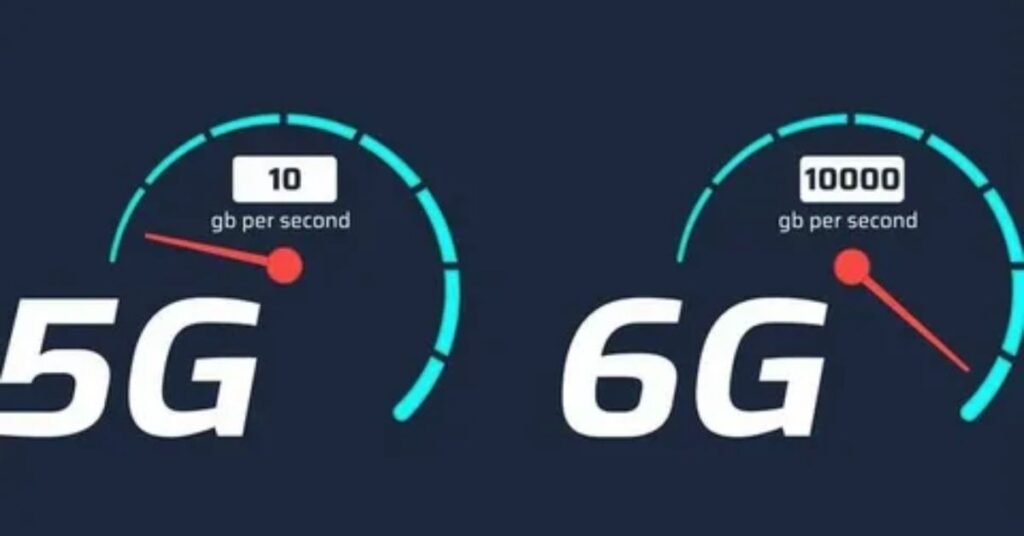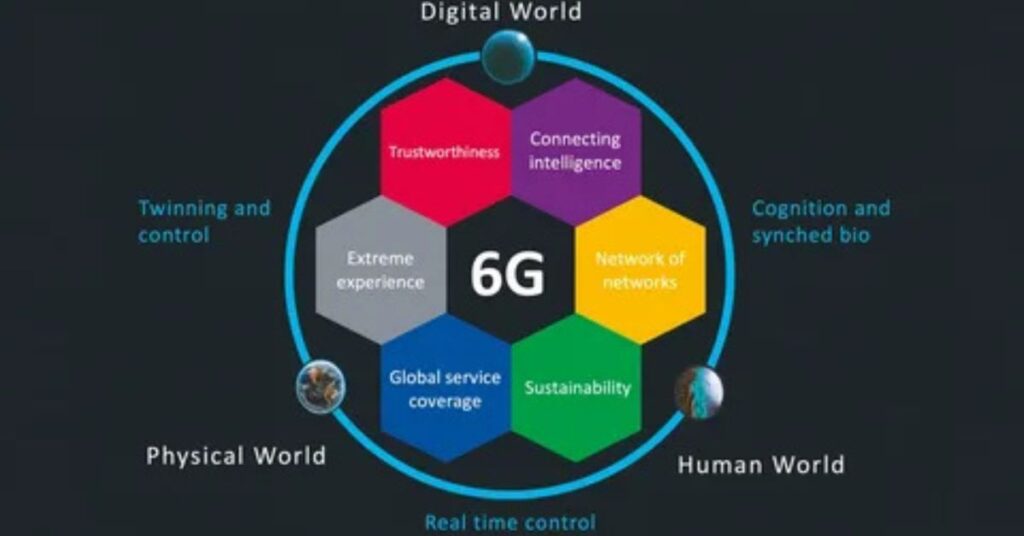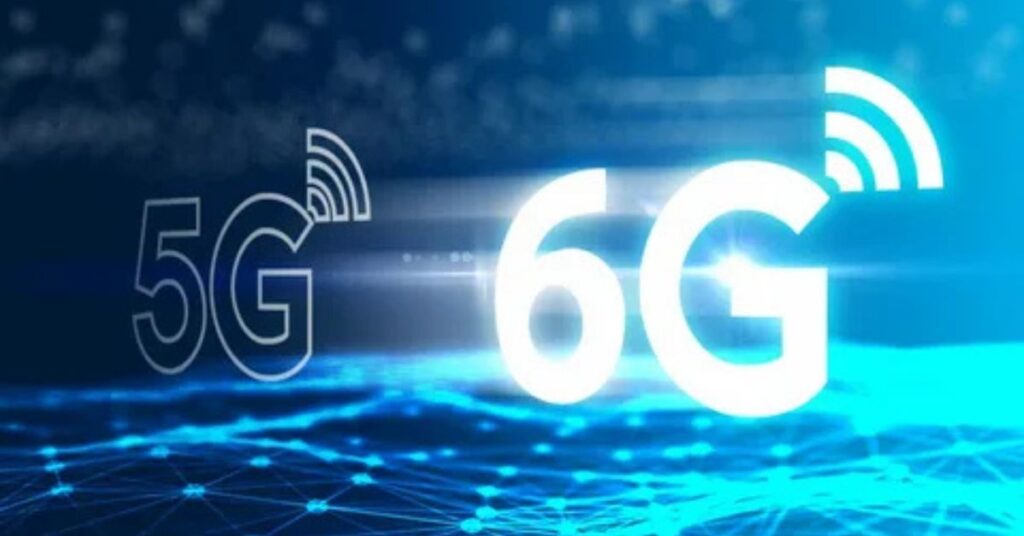Imagine a world where your internet is so fast, intelligent, and seamless that videos load before you even click play, and your devices understand your needs instantly. Sounds like science fiction? That’s the power of 6G, the next evolution in wireless technology.
Let’s break down, in simple terms, how 6G differs from 5G and why it could redefine how we live, work, and connect in the coming decade.
- Understanding 5G Today
- Speed: Who Wins the Race?
- Latency: How Fast Is “Speedy”?
- Spectrum & Smarter Networks
- AI-Native Networks
- Connecting More Devices
- Real-World Scenarios: How Could 6G Change Life?
- Global Progress & 2030 Rollout
- Challenges Ahead
- How You Can Prepare Today (Step-by-Step)
- Why You Should Feel Confident About Buying In
- Conclusion
- FAQ's
Understanding 5G Today
Let’s start with the present-day hero, 5G, the fifth generation of cellular networks that has revolutionized how we stream, communicate, and connect. It offers faster downloads, smoother video calls, ultra-low latency, and supports the growing world of Internet of Things (IoT) devices.
Today, 5G powers everything from smart cities to autonomous vehicles and remote healthcare applications, making our digital lives more efficient and connected than ever.
Still, tech experts and telecom innovators are already setting their sights on something even more powerful, 6G, the sixth wave of mobile internet. This upcoming technology promises unimaginable data speeds, AI-driven network optimization, and seamless real-time communication across billions of devices.
Think of it like preparing to launch a super-intelligent rocket while your current one is still mid-flight, faster, smarter, and designed for a future where the digital and physical worlds merge perfectly.
Discover the core concepts and capabilities shaping the future of wireless in this complete breakdown of 6G technology explained.
Speed: Who Wins the Race?

5G can reach impressive speeds of around 10 Gbps, allowing you to download an HD movie in just a few seconds. However, 6G technology takes this race to an entirely new level, with potential speeds soaring up to 1 terabit per second (1 Tbps), nearly a thousand times faster than 5G.
This means you could download a full 8K movie in milliseconds or stream ultra-realistic holographic experiences without a single lag. The jump in data transmission speed will not only enhance entertainment but also revolutionize smart cities, autonomous vehicles, and real-time industrial automation, pushing the boundaries of what’s possible in wireless connectivity.
Latency: How Fast Is “Speedy”?
In gaming, milliseconds matter. 5G boasts about 1 ms latency, which already feels nearly real-time. In contrast, 6G aims for sub-millisecond or even microsecond latency, making delays practically invisible.
This ultra-low latency will not only revolutionize cloud gaming but also enable real-time applications like autonomous vehicles, remote surgeries, and immersive virtual reality (VR) experiences without any lag.
Spectrum & Smarter Networks
While 5G uses the mmWave frequency, 6G moves into the terahertz range (100 GHz–3 THz), a much faster but more fragile signal. To keep it strong, 6G will rely on beamforming, ultra-massive MIMO, and intelligent reflective surfaces (RIS) for stable coverage.
This shift to THz communication will enable unprecedented data transfer rates, powering smart cities, autonomous vehicles, and immersive digital experiences like holographic communication and extended reality (XR).
AI-Native Networks
Here is where 6G gets brainy. Unlike past networks, it is built with AI at its core, meaning it can:
- Predict network traffic – by analyzing user behavior and real-time data patterns, 6G can automatically balance loads and prevent slowdowns before they occur.
- Fix issues before they happen – using machine learning algorithms, 6G networks can detect faults, reroute connections, and maintain uninterrupted service.
- Smartly manage connection speed – with AI-driven optimization, the system adjusts bandwidth for every device, ensuring maximum performance even in crowded areas.
This AI-native design makes 6G more intelligent, reliable, and energy-efficient, a major leap toward the future of wireless connectivity.
Connecting More Devices
5G can handle around 1 million connected devices per square kilometre. 6G aims to support billions of devices, making it perfect for smart cities, IoT ecosystems, and fully automated systems.
This massive jump in device density will enable real-time data exchange, powering innovations like autonomous transportation, AI-driven infrastructure, and ultra-responsive urban networks.
Real-World Scenarios: How Could 6G Change Life?
| Area | 5G Example | 6G Future Potential |
| Entertainment | Video streaming | 3D holographic calls, ultra-real extended reality (XR) |
| Healthcare | Telemedicine video calls | Remote surgery with haptic feedback, AI-assisted diagnostics |
| Automotive | Connected vehicles | Car-to-car communication and real-time city sensing |
| Cities & IoT | Smart parking sensors | Digital twins and synchronised smart systems |
Explore how digital twin technology will power smart cities and real-time simulations in the 6G era.
Global Progress & 2030 Rollout

Around the world, innovators are testing the future. MNNIT of India, IIIT Gwalior, and PEC are developing indigenous 1 TB/s antennas. Meanwhile, experts anticipate commercial deployment of 6G around 2030.
Challenges Ahead
6G does face hurdles:
- Costly infrastructure
THz equipment and dense networks are not cheap. Building and maintaining these ultra-high-frequency systems will require massive investment in advanced 6G infrastructure and smart deployment strategies to make them commercially viable. - Energy concerns
Faster data means more power, unless networks become greener. Future 6G networks must adopt energy-efficient architectures and green communication technologies to reduce carbon footprints and support sustainable connectivity. - Privacy & Security Risks: More immersive data means more vulnerability. AI-designed 6G security systems and quantum-safe encryption will be essential to protect sensitive user information in hyperconnected environments.
How You Can Prepare Today (Step-by-Step)
- Stay informed
Follow updates from Ericsson, Nokia, and IEEE. Follow updates from Ericsson, Nokia, and IEEE, who are leading global 6G research and standardization efforts.
Regularly checking their latest whitepapers or press releases ensures your knowledge, and your content stays ahead of upcoming 6G breakthroughs and pilot projects. - Adopt evolving tech
Keep your devices and infrastructure 5G-Advanced or upgrade-ready to ensure a smoother transition when 6G arrives.
This future-proofs your setup and lets you experience early-edge features like AI-optimized connectivity and microsecond latency as soon as they roll out. - Think future-focused
Consider how instant, immersive connections could improve your life, from holographic meetings to AI-powered smart homes.
Staying open to these innovations will help you adapt quickly as 6G technology integrates deeper into daily life. - Invest wisely
Companies driving the 6G transition, such as Samsung, Qualcomm, and Huawei, are shaping the next generation of connectivity.
Keeping an eye on these industry leaders can help you make strategic tech or stock investments aligned with 6G’s global expansion.
With faster and smarter 6G connectivity, digital risks will also rise, learn how to stay protected with these cybersecurity tips for small business owners.
Why You Should Feel Confident About Buying In
- Future-proof your life
From holographic chats to smart cities, the future will be immersive. With 6G technology, you’ll experience seamless interaction between humans and machines, unlocking experiences once thought impossible. - Stay ahead competitively
Early adopters of 6G tech can leapfrog the competition. Businesses that integrate AI-driven connectivity and ultra-fast networks early will dominate emerging digital ecosystems. - Join a smarter world
Work, learn, and play in fully responsive environments powered by AI-native 6G networks. Every connected device, from your home to your car, will intelligently adapt to your needs in real time.
Conclusion
6G is not just about connecting devices, it is about connecting experiences, people, and possibilities. Whether it is remote surgery, holographic classrooms, or AI-powered cities, 6G will turn futuristic visions into everyday realities. As we move toward 2030, staying informed, adaptable, and security-aware will help everyone, from individuals to industries, thrive in this hyperconnected era.
While we may not see 6G roll out until around 2030, the groundwork is already being laid. Companies, researchers, and governments are investing heavily to make sure this next generation of connectivity is secure, reliable, and universally accessible.
For now, 5G will continue to power our smartphones, IoT devices, and emerging technologies, but the 6G era is coming faster than many expect. Those who embrace and prepare for it early will be ready to seize its opportunities, whether in business, innovation, or everyday life.
In short, 6G is not just the next step: it is the leap toward a fully connected, intelligent future.
FAQ’s
Is 6G available now?
Not yet. 6G technology is still in the research and development phase. Industry leaders like Samsung, Nokia, and the International Telecommunication Union are working on creating the technical standards.
Most experts predict the first commercial 6G networks will launch around 2030. Until then, 5G will continue to expand worldwide.
Is 6G better than 5G?
In almost every way, yes. While 5G already gives us incredible speeds and low latency, 6G aims to push the limits of what’s possible:
Up to 100x faster speeds (possibly 1 Tbps)
Ultra-low latency (under 1 millisecond)
AI-powered network management for real-time optimisation
Massive support for IoT devices and futuristic tech like holograms
Can 6G understand images and audio?
Not exactly in the same way a human does, but 6G networks will be built for devices that can process images, audio, and even immersive environments instantly.
For example:
A holographic video call that looks as real as standing face-to-face
Augmented reality glasses streaming 4K visuals without lag
Real-time translation of live conversations
This is possible thanks to AI integration and the massive bandwidth of 6G.


Pingback: 6G Technology Explained: What It Is, How It Works, and Why It Matters - Future Weave
Pingback: Benefits of 6G Over 5G Explained: Speed, Features and Why It is a Game-Changer - Future Weave